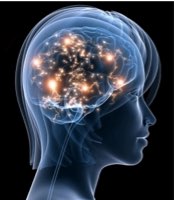We Are All Machines That Think
My answer to this year’s Edge Question, “What Do You Think About Machines That Think?”
 Julien de La Mettrie would be classified as a quintessential New Atheist, except for the fact that there’s not much New about him by now. Writing in eighteenth-century France, La Mettrie was brash in his pronouncements, openly disparaging of his opponents, and boisterously assured in his anti-spiritualist convictions. His most influential work, L’homme machine (Man a Machine), derided the idea of a Cartesian non-material soul. A physician by trade, he argued that the workings and diseases of the mind were best understood as features of the body and brain.
Julien de La Mettrie would be classified as a quintessential New Atheist, except for the fact that there’s not much New about him by now. Writing in eighteenth-century France, La Mettrie was brash in his pronouncements, openly disparaging of his opponents, and boisterously assured in his anti-spiritualist convictions. His most influential work, L’homme machine (Man a Machine), derided the idea of a Cartesian non-material soul. A physician by trade, he argued that the workings and diseases of the mind were best understood as features of the body and brain.
As we all know, even today La Mettrie’s ideas aren’t universally accepted, but he was largely on the right track. Modern physics has achieved a complete list of the particles and forces that make up all the matter we directly see around us, both living and non-living, with no room left for extra-physical life forces. Neuroscience, a much more challenging field and correspondingly not nearly as far along as physics, has nevertheless made enormous strides in connecting human thoughts and behaviors with specific actions in our brains. When asked for my thoughts about machines that think, I can’t help but reply: Hey, those are my friends you’re talking about. We are all machines that think, and the distinction between different types of machines is eroding.
We pay a lot of attention these days, with good reason, to “artificial” machines and intelligences — ones constructed by human ingenuity. But the “natural” ones that have evolved through natural selection, like you and me, are still around. And one of the most exciting frontiers in technology and cognition is the increasingly permeable boundary between the two categories.
Artificial intelligence, unsurprisingly in retrospect, is a much more challenging field than many of its pioneers originally supposed. Human programmers naturally think in terms of a conceptual separation between hardware and software, and imagine that conjuring intelligent behavior is a matter of writing the right code. But evolution makes no such distinction. The neurons in our brains, as well as the bodies through which they interact with the world, function as both hardware and software. Roboticists have found that human-seeming behavior is much easier to model in machines when cognition is embodied. Give that computer some arms, legs, and a face, and it starts acting much more like a person.
From the other side, neuroscientists and engineers are getting much better at augmenting human cognition, breaking down the barrier between mind and (artificial) machine. We have primitive brain/computer interfaces, offering the hope that paralyzed patients will be able to speak through computers and operate prosthetic limbs directly.
What’s harder to predict is how connecting human brains with machines and computers will ultimately change the way we actually think. DARPA-sponsored researchers have discovered that the human brain is better than any current computer at quickly analyzing certain kinds of visual data, and developed techniques for extracting the relevant subconscious signals directly from the brain, unmediated by pesky human awareness. Ultimately we’ll want to reverse the process, feeding data (and thoughts) directly to the brain. People, properly augmented, will be able sift through enormous amounts of information, perform mathematical calculations at supercomputer speeds, and visualize virtual directions well beyond our ordinary three dimensions of space.
Where will the breakdown of the human/machine barrier lead us? Julien de La Mettrie, we are told, died at the young age of 41, after attempting to show off his rigorous constitution by eating an enormous quantity of pheasant pâte with truffles. Even leading intellects of the Enlightenment sometimes behaved irrationally. The way we think and act in the world is changing in profound ways, with the help of computers and the way we connect with them. It will be up to us to use our new capabilities wisely.
We Are All Machines That Think Read More »

